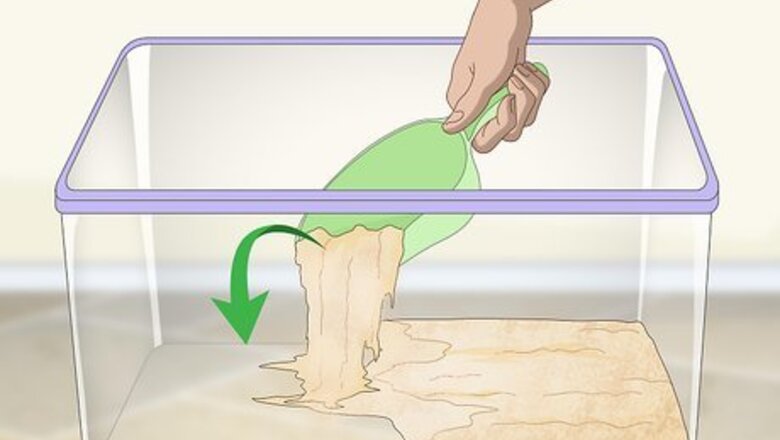
views
Building the Habitat
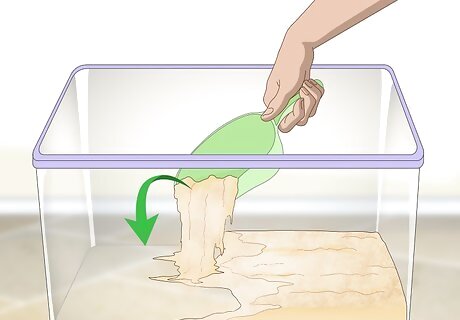
Line the bottom of a plastic tub with soil and sand. Use clean potting soil and sand so you don’t bring in any outside contaminants. Put 1 in (2.5 cm) of potting soil on half of a 14 × 8 × 5 in (36 × 20 × 13 cm) plastic tub. Then, lay 1 in (2.5 cm) of sand on the opposite side as the soil. If you don’t have sand or potting soil, you can also use coir fiber from a gardening store.
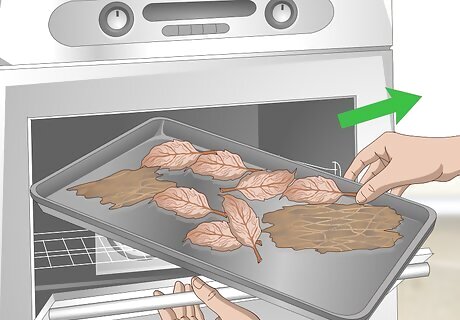
Dry leaves and bark in the oven before adding it to your habitat. Look for fallen leaves and bark from trees outside in your area. A handful of each should be enough for a thin layer. Put the leaves and bark on a cooking tray and place them in an oven heated to 200 °F (93 °C) for 5–10 minutes. Drying out the leaves and bark helps get rid of outside bacteria and contaminants. When they’re finished drying out, layer the leaves and branches on the soil side to make a naturalistic habitat for your isopods. Make sure to use leaves or bark that haven’t been treated with any pesticides.
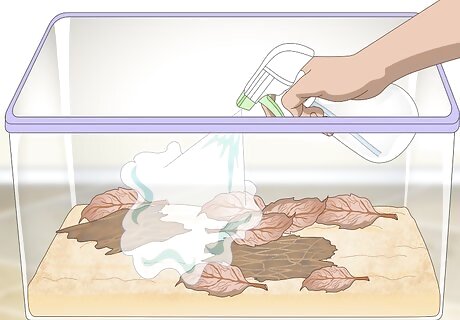
Mist the leaves with a spray bottle and purified water. Moisture in the habitat gives your isopod access to water as well as keeps it humid. Fill a spray bottle with purified water so you don’t introduce any contaminants, such as added minerals, to your habitat. Spray the sand, soil, and leaves so they’re slightly wet, but not so much that it makes standing water.Tip: If you don’t have a spray bottle you can easily use, dampen a piece of paper towel and set it on the sand in your habitat. Replace the paper towel each day. That way, it’s less likely for mold to grow there.

Set cardboard squares in your habitat to give your isopods shelter. Cut 2-3 squares of cardboard that are about 2 in × 3 in (5.1 cm × 7.6 cm). Set the squares so they overlap with one another on either side of your tank. This gives your isopods somewhere to hide during the daytime since they’re most active at night. Make sure the cardboard is untreated and unpainted or else it could harm your isopods.
Caring for Your Isopods
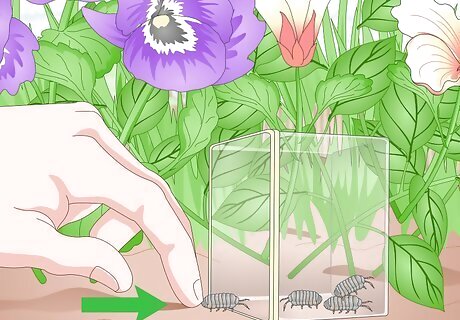
Collect your isopods from the wild or a culture set. If you plan on capturing your isopods from the wild, start by looking underneath stones and logs. Use your fingers to guide or push them into a plastic container so you can transfer them to their new habitat. If you don’t want to search for your own, see if you can purchase isopod cultures online or from your local pet store. Aim to find between 20-30 isopods to put into your tank to encourage breeding. Common Types of Isopods Dwarf white isopods are one of the smallest species and have a bright white color. Choose them if you plan on only using them to clean a tank. Dwarf striped isopods are grey in color, and can be used as supplementary food for reptiles or cleaning your tank. Orange isopods are a bright yellow or orange color and are mainly used to feed other animals.
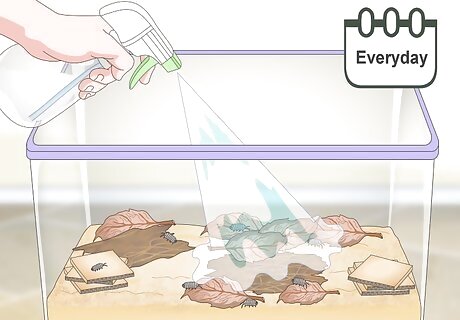
Mist the habitat every day so it doesn’t dry out. Remove the lid from your isopod habitat and lightly mist the substrate with your spray bottle. Make sure the soil and sand is damp to the touch, but not so wet that there’s standing water on the surface. Leave one side of your habitat less wet so the isopods can regulate how much moisture they want on their own. If you’re going to be away for a couple of days, completely saturate a paper towel and set it in the sandy side of your tank.

Leave carrot shavings, small pieces of lettuce, or fish flakes for food. While your isopods will eat the leaves in their habitat, adding small pieces of fruits and vegetables offers other nutrients to keep your isopods healthy. Tear off small pieces of the food you plan on putting in your habitat and spread it evenly throughout the tub. Otherwise, sprinkle a pinch of high-quality fish flakes throughout the tank. Replace the food whenever you notice it starting to mold, or about once a week. Try different foods, such as apples and mangoes, to see what your isopods prefer to eat. Add more leaves every 2–3 weeks to keep your isopods fed.
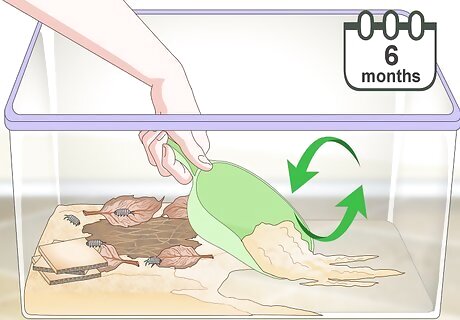
Replace half of the substrate every 6 months. Over time, your substrate will get dirty and should be replaced. Remove half of the soil and sand from the tank and replace it so your isopods have a clean habitat. The substrate you remove will have isopods buried underneath. Use the substrate you take out to start another habitat in a second plastic container if you want. Otherwise, dispose of it outside.
Harvesting Isopods

Check underneath pieces of bark or cardboard for new isopods after 1 month. Isopods usually breed within 2 weeks to 1 month. After a month has passed, lift up any of the cardboard and wood pieces in your tank and look underneath them for isopods. You should easily be able to find about 50 isopods, if not more. Harvest later in the evening since isopods are more active when it’s dark at night.
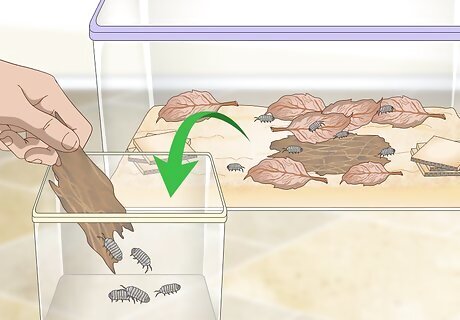
Transfer the isopods you want to use into a smaller plastic container. Use your fingers to pick your isopods out from the substrate or to scrape them off the piece of wood you lifted. Keep a smaller container next to your main habitat so you don’t accidentally drop the isopods. Return any other isopods back to the habitat.
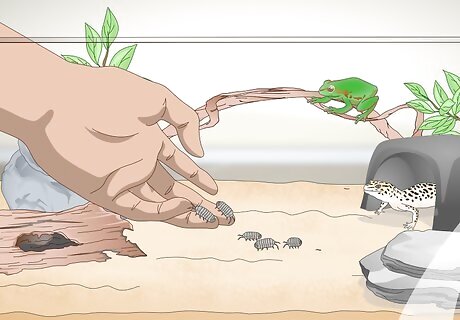
Give your isopods to a pet reptile or amphibian for a snack. Small reptiles and amphibians, such as geckos and tree frogs, can’t survive off of eating isopods alone, but they make a tasty treat every so often. Put a few isopods in your pet’s tank so it has a chance to hunt and try new foods. Even if your pet doesn’t eat the isopods immediately, the isopods can breed in its tank for your pet to hunt later.

Put isopods in a vivarium to clean up plant waste in the tank. Vivariums are tanks that house different plant life and sometimes animals. Put 10-15 of your isopods in your vivarium so they can burrow in the soil and clean the tank so you don’t have to. Let the isopods breed in your vivarium so you don’t have to worry about them.

















Comments
0 comment